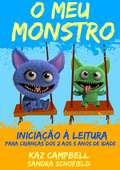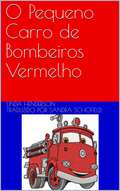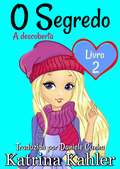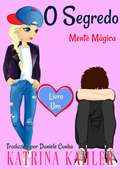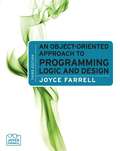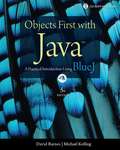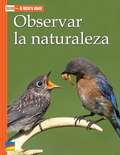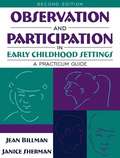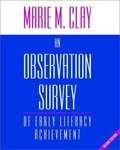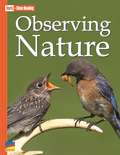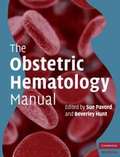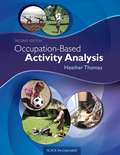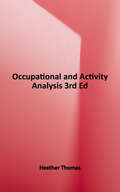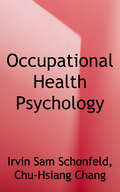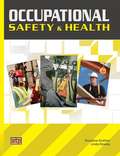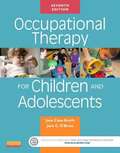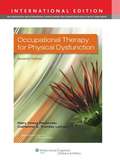- Table View
- List View
O Meu Monstro 4 - Iniciação à Leitura - para crianças dos 2 aos 5 anos de idade
by Sandra Schofield Kaz CampbellSegue as aventuras do monstro no primeiro dia no Infantário; no parque; a brincar ao Doce ou Travessura e lê também sobre a festa de aniversário do monstro. Todas as histórias têm imagens para ajudar os seus filhos a compreender e a desfrutar do prazer da leitura. Há 2 secções de bónus: piadas de monstro, adivinhas e trava-línguas, bem como uma secção a explicar Como Ler Com Uma Criança Pequena.
O Pequeno Carro de Bombeiros Vermelho
by Linda HendersonO pequeno carro de bombeiros vermelho tinha uma vida feliz - até que, um dia, chegaram dois novos carros de bombeiros à sua garagem. Ele tinha a certeza de que não iria continuar a ser querido ou necessário. Descubra o que acontece ao pequeno carro de bombeiros vermelho. Esta história irá mostrar à sua criança (idade: 3-5) que, mesmo quando alguma coisa má acontece, ainda pode haver um final feliz.
O Segredo Livro 2 A descoberta
by Katrina Kahler Daniele CunhaO Segredo - Livro 2: A descoberta continua a história de suspense de Sam e seu poder especial que ele faz de tudo para esconder. Quando sua vizinha, Tess, acidentalmente descobre seu segredo, ele acredita que sua amizade com a linda garota que mora na casa vizinha chegou ao fim e ele teme o pior. Contudo, ele não esperava a reação dela e no que aconteceu! Escrito a partir do ponto de vista da Tess, essa estória irá manter o leitor ansioso da primeira à última página, onde Tess descobre mais ainda do que esperava! Este livro incrível é para garotas que gostam de ler sobre crianças com poderes únicos e sobrenaturais. Adicione drama, crises na amizade, problemas com bullying, crushes e uma pitada de romance, essa estória é para garotas de 9-12 anos e até os mais velhos irão gostar.
O Segredo - Livro 3: Poder da Mente (O Segredo #3)
by Katrina Kahler Daniele CunhaO Segredo - Livro 3: Poder da Mente é uma continuação incrível da série. Mais uma vez, inclui todos os elementos de uma ótima estória que vai manter o suspense e fazer com você se pergunte o que vai acontecer em seguida. Tess está determinada a ficar ao lado de Sam, mas será que ela será capaz de seguir com sua promessa a qualquer custo? Será que Sam será capaz de controlar a si mesmo e manter seu segredo? Essas perguntas e muitas outras serão respondidas nesse incrível livro voltado para garotas, cativante e que vai fazer você não querer parar de ler. Outra estória de drama, amizade e lealdade que irá testar os limites até o fim!
O Segredo Mente Insana Livro Um
by Katrina Kahler Daniele CunhaQuando a garota Tess de 12 anos se muda para uma nova vizinhança, ela tenta ser amiga de seu vizinho, um garoto da mesma idade chamado Sam. Tess não sabe que Sam tem um poder especial, um que ele deve manter em segredo a qualquer custo. Não, ele não lê mentes, mas ele é capaz de algo que muitas vezes ele luta para manter controle. As outras crianças acham ele estranho e tendem a evitá-lo. Mas com a chegada da Tess, tudo muda. Contudo, Sam não é o único interessado na Tess. O garoto mais popular da sala, um garoto chamado Jake Collins também a nota e Sam chega a conclusão que ele não tem chance. Então, quando o "bullying" de Jake começa a piorar, Sam é forçado a ensinar-lhe uma lição. Mas o que acontece quando o Sam vai longe demais? E a Tess descobre do que ele é realmente capaz? Se você adora ler sobre crianças com poderes especiais e se você gostou da minha série chamada "Mind Reader", então você também irá gostar dessa série. É mais uma estória empolgante cheia de drama, suspense, romance, crushes, problemas na amizade e muito, muito mais. Um livro de suspense para meninas que você não vai conseguir parar de ler.
An Object-oriented Approach to Programming Logic and Design (3rd edition)
by Joyce FarrellAn Object-Oriented Approach to Programming Logic and Design, Third Edition provides the beginning programmer with a guide to developing object-oriented program logic. This textbook assumes no programming language experience. The writing is nontechnical and emphasizes good programming practices. The examples are business examples; they do not assume mathematical background beyond high school business math. Additionally, the examples illustrate one or two major points; they do not contain so many features that students become lost following irrelevant and extraneous details.
Objects First with Java: A Practical Introduction Using BlueJ
by David J. Barnes Michael KöllingObjects First with Java: A Practical Introduction Using BlueJ, 5e, is ideal for introductory courses in Java/Introduction to Programming and Object-Oriented Programming and for beginning programmers. This is the only introductory programming textbook that uses the BlueJ integrated development environment (IDE) to teach introductory and object-oriented programming principles using Java. Its close integration with the BlueJ development environment allows this book to focus on key aspects of object-oriented software development from day one. BlueJ's clear visualization of classes and objects means that readers can immediately appreciate the differences between them, and gain a much better understanding of the nature of an object than they would from simply reading source code. Unlike traditional textbooks, the chapters are not ordered by language features but by software development concepts. Language features are introduced as a response to the problems to be solved. A large number of different, interesting projects are used to provide variety and avoid the monotony of a running problem. This book takes an "objects first" approach to teaching the traditionally difficult concepts of objects in a manipulative visual form. Throughout, the emphasis is on developing a practical approach to programming, with students encouraged to add code to existing programs rather than working with an intimidating sheet of blank paper. This textbook is printed in four-color to aid pedagogy and reader learning.
Observar el cielo de noche (¡Arriba la Lectura!, Level S #17)
by George IvanoffNIMAC-sourced textbook
Observar la naturaleza: Textos Para La Lectura Atenta (Texts Close Reading Ser.)
by Benchmark Education Co. LLC StaffNIMAC-sourced textbook
Observation And Participation In Early Childhood Settings: A Practicum Guide
by Jean Billman Janice ShermanThis book was written to give readers experience in using effective methods for observing young children's development (ages 0-8) and documenting their observations. The book is designed to guide readers' participation with children of different age groups in a variety of early childhood settings. The book encourages readers to interact with children as they learn more about development by carrying out the activities outlined in each chapter. For anyone involved with the education of young children, or practicing in a related field.
An Observation Survey of Early Literacy Achievement
by Marie M. ClayThis book provides teachers and school systems with essential information about how to assess young children's progress in literacy learning. The six tasks of the Observation Survey are used by teachers across the world to explore children's knowledge of early reading and writing, monitor progress, guide instruction, and reliably identify children for supplementary assistance. <p><p> This fourth edition of Marie Clay's seminal text includes two important new developments: 1. a revised task for assessing children's phonemic awareness and sound-letter knowledge is more sensitive to different rates of progress and to the difficulties some children might have; 2. updated norms for five of the Observation Survey tasks will enable teachers and schools to more accurately monitor and compare the progress of five-to-seven-year-old children across different aspects of literacy learning. <p><p> The observation procedures arose from a theory of how children learn to manage the complex task of learning to read and write continuous text.
An Observation Survey of Early Literacy Achievement (2nd Edition)
by Marie M. ClayThis book provides for the systematic observation of young children's responses to classroom reading and writing in the first years of school.
Observing Nature
by Lawrence Hall of Science University of California at BerkeleyNIMAC-sourced textbook
The Obsession (Fountas & Pinnell Classroom, Guided Reading)
by Teri Eastman Jan FeindtNIMAC-sourced textbook
The Obstetric Hematology Manual
by Sue Pavord Beverley HuntObstetric hematology is a fast-growing area of medicine covering the diagnosis and management of hematological problems of pregnancy. Comprehensive in approach, The Obstetric Hematology Manual addresses the many hematological conditions that can cause serious problems in pregnancy, delivery and the post-partum period for both mother and baby. Written by a team of international authorities, this text provides up-to-date, evidence-based guidelines on best care, as well as sound advice based on the experience and opinion of experts. Where appropriate, basic principles are discussed to clarify the rationale for management, and systems and procedures for disease prevention are highlighted. Many conditions and cases are discussed, including venous thromboembolism, pre-eclampsia, anemia, thrombocytopenia and inherited disorders. This book will appeal to both trainees and practitioners in obstetrics, obstetric medicine, obstetric anesthesia and hematology. It is also an accessible text for midwives, nurses, and laboratory staff.
Occupation-Based Activity Analysis
by Heather ThomasOccupational therapists use occupations and activities as not just a goal, but also as a treatment medium, therefore, they must understand both the uniqueness of a client’s occupations and how an activity can be used therapeutically. To analyze the complexity of an occupation takes much more depth of understanding of the person engaging in it, his or her environment, and the uniqueness of the occupation a person has chosen. <p><p> The new Second Edition of Occupation-Based Activity Analysis continues the tradition of teaching students and clinicians the process of conducting activity analyses and occupation-based activity analyses. <p> Dr. Heather Thomas has updated Occupation-Based Activity Analysis, Second Edition to reflect the significant changes made to the activity analysis process and terminology in the Occupational Therapy Practice Framework, Third Edition. As in an activity analysis, occupation-based activity analysis looks at what is required for full participation, yet goes beyond analyzing the activity; it looks at what it means for the person engaging in it and how and where it is performed by that person. <p> Inside Occupation-Based Activity Analysis, Second Edition, each chapter is dedicated to a component of the activity analysis process and corresponding section of the Framework. Chapters have been restructured based on a greater emphasis on occupation-based activity analysis. From start to finish, readers are guided through identifying the occupation, sequence and timing, objects and properties, space and social demands, body functions, and structures and performance skills required.
Occupational and Activity Analysis
by Heather ThomasNewly updated to reflect the Occupational Therapy Practice Framework: Domain and Process, Fourth Edition (OTPF-4), Occupational and Activity Analysis, Third Edition outlines the process of conducting occupational and activity analyses for occupational therapy students and clinicians. <p><p>Occupational therapy practitioners use occupations and activities not only as a goal but also as a treatment medium, so understanding both the uniqueness of a client's occupation and how an activity can be used therapeutically is essential. This text is an introduction to both realms, first by explaining the process by which to peel back the layers of an occupation or activity to reveal its intricacy and then examining how to use this information for evaluation and intervention. <p><p>Dr. Heather Thomas has updated Occupational and Activity Analysis, Third Edition to reflect the significant changes made to the activity analysis process and terminology in the OTPF-4. Conducting either an occupational or activity analysis investigates not only what is required for full participation but also looks at the meaning ascribed to it by the people, groups, or communities engaging in it and how personal and environmental contexts impact participation. <p><p> What's new and included in the Third Edition: <p>• Chapters throughout the text have been updated to reflect the changes in the OTPF-4. <p>• Updated educational standards set by the Accreditation Council for Occupational Therapy Education (ACOTE) for doctoral and master's level and occupational therapy assistant programs. <p>• Additional cases and relevant clinical examples. <p>• Updated tables, boxes, and figures throughout. <p>• Expanded section on communication management. <p>• Appendices containing updated occupational and activity analysis forms. <p>• Example of a full activity analysis. <p>• Updated and added photos to help students understand concepts. <p>• Instructors in educational settings can visit www.efacultylounge.com for forms, videos, and PowerPoint presentations to be used for teaching in the classroom. <p><p>As a foundational skill, occupational and activity analysis is utilized throughout students' careers and into their lives as practitioners, making Occupational and Activity Analysis, Third Edition the perfect textbook for the occupational therapy or occupational therapy assistant student, faculty, or clinician.
Occupational, Business and Vocational Technology Education Class 7-Nepal (English Language)
by Nepal Curriculum CenterThis accessible book has been developed by Action on Disability Rights And Development-Nepal (ADRAD) for the free distribution to students with visual and print disabilities in cooperation of Curriculum Development Center and Australian Embassy in Nepal under Direct Aid Program.
Occupational Health Psychology
by Irvin Schonfeld Chu-Hsiang ChangThis comprehensive text for advanced undergraduate and graduate occupational health psychology (OHP) survey courses draws from the domains of psychology, public health, preventive medicine, nursing, industrial engineering, law, and epidemiology to focus on the theory and practice of protecting and promoting the health, well-being, and safety of individuals in the workplace and improving the quality of work life. <p><p>The book will also appeal to anyone who is concerned with the corrosive effects of job stress. The text addresses key psychosocial work issues that are often related to mental and physical health problems, including psychological distress, burnout, depression, accidental injury, obesity, and cardiovascular disease. It examines leadership styles as they impact organizational culture and provides specific recommendations for reducing employee-related stress through improved leader practices. Also addressed is the relationship between adverse psychosocial working conditions and harmful health behaviors, along with interventions aimed at improving the work environment and maximizing effectiveness. Additionally, the book discusses how scientists and practitioners in OHP conduct research and other important concerns such as workplace violence, work and life balance, and safety. The book reinforces learning with key concepts and findings, highlight tables containing intriguing examples of research and current controversies, and chapter summaries.
Occupational Safety And Health
by Rosalene Graham Linda RowleyOccupational Safety & Health provides an overview of potential workplace hazards, necessary safety practices, and how various processes need to be managed in order to maintain a safe workplace. This textbook is designed for use in introductory safety courses and by professionals who want to advance in the field as well as individuals who need to understand and implement safety programs. Appropriate safety regulations and laws, hazard recognition, and personal protective equipment are addressed.
Occupational Therapy For Children And Adolescents
by Jane Case-Smith Jane O'BrienThe sixth edition of Occupational Therapy for Children maintains its focus on children from infancy to adolescence and gives comprehensive coverage of both conditions and treatment techniques in all settings. Inside you'll discover new author contributions, new research and theories, new techniques, and current trends to keep you in step with the changes in pediatric OT practice. This edition provides an even stronger focus on evidence-based practice with the addition of key research notes and explanations of the evidentiary basis for specific interventions.
Occupational Therapy For Physical Dysfunction
by Mary Vining Radomski Catherine A. Trombly LathamSucceed in the course and master the concepts and skills you need to be an effective, reflective practitioner with Occupational Therapy for Physical Dysfunction, 7th Edition. The authors introduce the highly acclaimed, easy-to-understand Occupation Functional Model (OFM) in the first section, setting the stage for subsequent discussions that guide you through the assessment and treatment of adult patients with physical dysfunction from initial evaluation to treatment to follow-up. Featuring engaging and practical coverage, the Seventh Edition includes the latest research in the field, new activity analysis case examples, new photos, new online videos, and a streamlined organization that includes 45 chapters in the print textbook with three additional chapters posted online.tables that highlight the psychometric properties and the strengths and weaknesses of individual assessment methods.
